Looking back at the traditional wisdom provides insight into future solutions to sustainable and resilient rice farming
Published in Earth & Environment
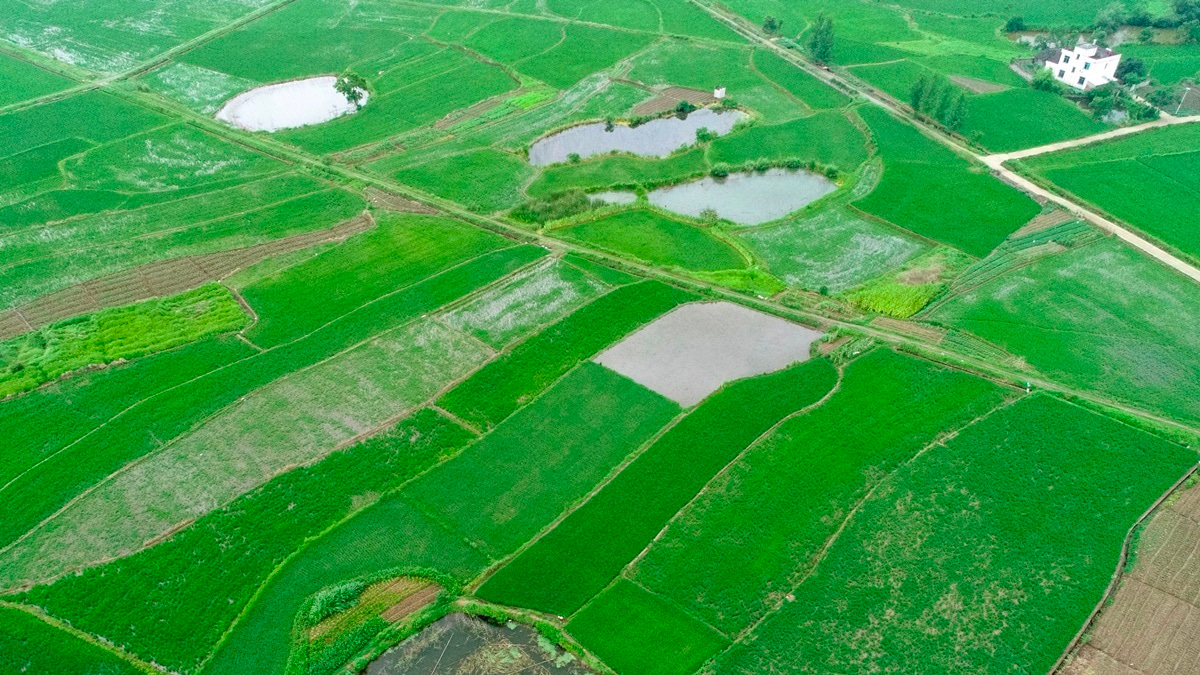
As a staple crop, rice feeds half of the world’s population. But rice farming consumes about 40% of global freshwater resources and releases much wastewater. Under climate change, extreme weathers become more frequent, which threatens rice yields on the one hand and increases nutrient losses and water eutrophication issues on the other. This means that we need to find a better way to use water for growing rice that is more sustainable and can cope with extreme weather.
Ponds played an important role in ancient rice-growing regions such as China and India. These scattered small water bodies have been used to store rainfall and drainage water for irrigation since 2500 years ago in China, but have been abandoned in recent decades. As scientists, we wonder how rice irrigation and drainage systems evolve like this and why. We also wonder the scientific logic behind the ancient wisdom of utilizing small water bodies for irrigation and drainage.
What we did and what we found?
To solve our questions, we did a systematic investigation of the evolution history and current status of rice irrigation drainage systems in China. We found that small ponds have been abandoned concurrently with the construction of “big and powerful” facilities such as reservoirs, pumping stations and channels. As these big facilities provide remote waters for irrigation, ponds were filled for farmland, hydrologically isolated for intensive aquaculture production or just disused because of poor maintenance.
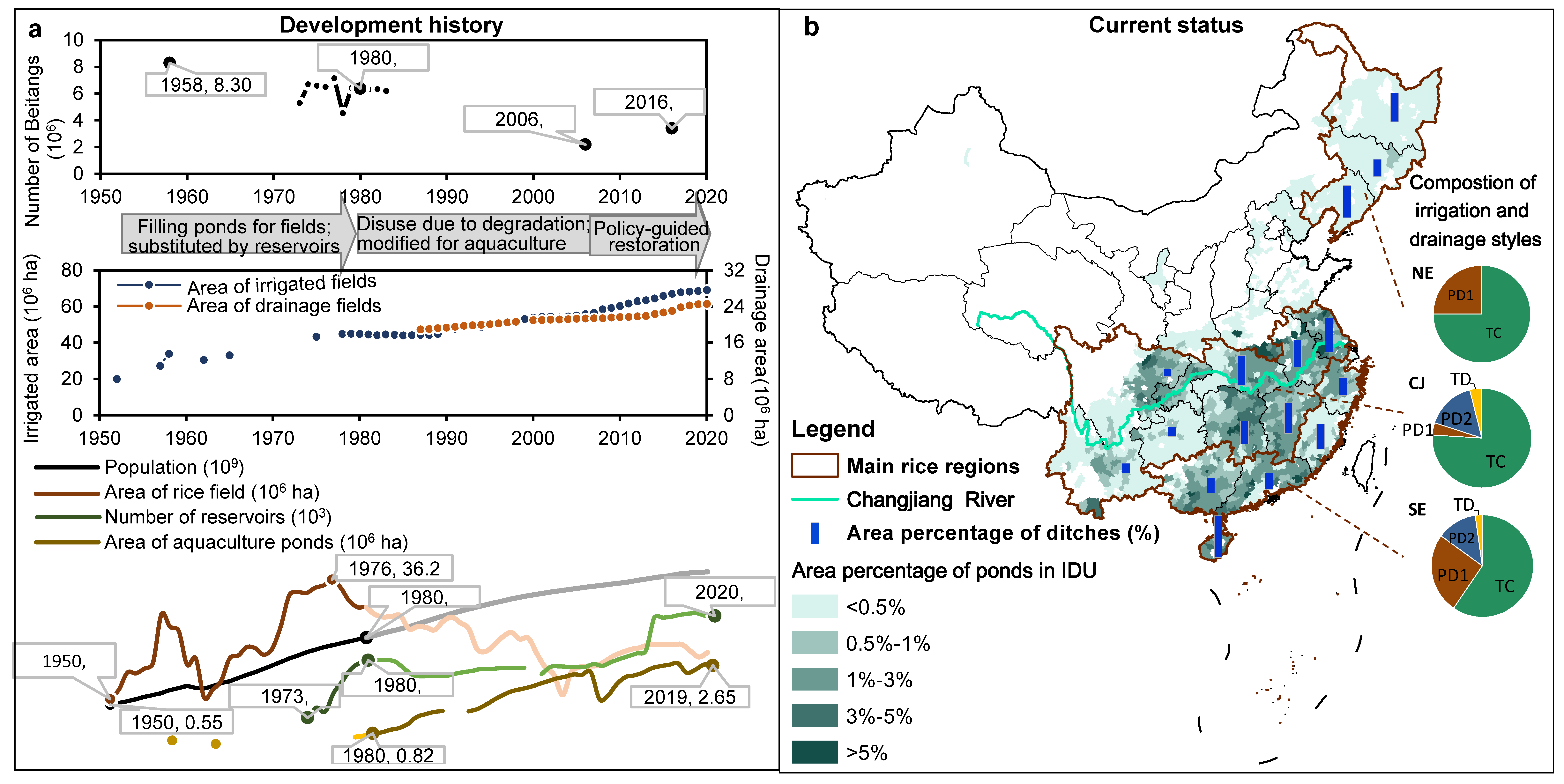
Fig. 1. Development history and current status of irrigation and drainage systems in rice-growing regions of China. (a) Abandoned traditional pond based Beitang system and its driving factors. (b) Small water bodies (ditches and ponds) existed and utilized in current rice irrigation drainage systems.
To furhter explore the consequence of these changes, we coupled a self-developed water quantity and quality model (WQQM-PIDU) and the FAO crop yield analysis model CROPWAT to analyze the impacts on water resource consumption, water environment and rice yields. We found the disuse of small water bodies increased the consumption of freshwater resources and also the release of nutritious wastewater. Meanwhile, it made rice yield more vulnerable to extreme weather events since irrigation become 100% reliant to remote water resources that may not be guaranteed in extreme dry events.
With these understanding, we suggest that we should start using small water bodies again by reconnecting them with rice fields and using them to recycle drainage water for irrigation. If we do this, we would reduce the water footprint of rice production in China by 30%, equivalent to saving 9% of all the freshwater used in the country. This would also help farmers to be more self-sufficient with their irrigation by increasing the amount of water they can collect locally from 3% to 31%. This mean that even in dry years, farmers would not lose as much of their crop.
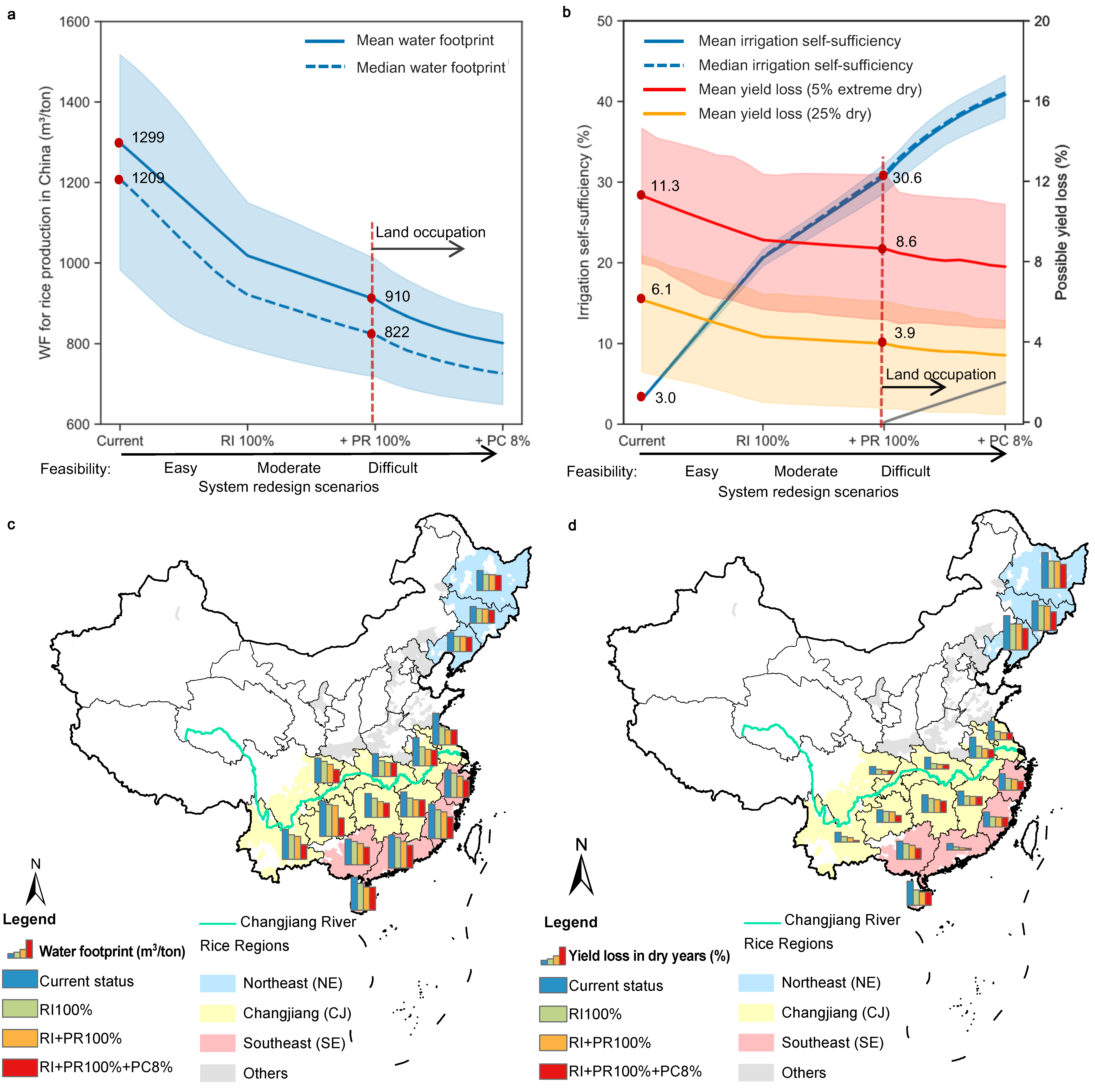
Fig. 2. Benefits of reactivating small water bodies for irrigation and drainage by recycling irrigation (RI), pond reconnection (PR) and pond construction (PC). (a) Benefit of water footprint reduction in whole China. (b) Benefit of increasing irrigation self-sufficiency and alleviating yield loss. (c) Benefit of water sustainability in different provinces. (d) Benefit of system resilience for different provinces.
Farmers’ wisdom of ancient times towards Nature-Based Solution to future challenges
To now, we understand the scientific logic of the ancient wisdom of utilizing small water bodies for irrigation and drainage. In the time when there are no reservoirs and fertilizers, using small water bodies to store drainage water for irrigation is a good approach to recycle water and nutrients, which are precious resources for crop growth. The modern techniques have made these resources cheap and easy to obtain, so that small water bodies have become less important and been abandoned.
But for the future challenges of achieving clean water and stable yields in the face of extreme weather events, recycling water resources and nutrients by small water bodies become a promising Nature-Based Solution. Looking back at the traditional wisdom sometimes provides insight into future solutions to sustainabile issues under climate change.
Follow the Topic
-
Nature Communications

An open access, multidisciplinary journal dedicated to publishing high-quality research in all areas of the biological, health, physical, chemical and Earth sciences.
Related Collections
With Collections, you can get published faster and increase your visibility.
Women's Health
Publishing Model: Hybrid
Deadline: Ongoing
Advances in neurodegenerative diseases
Publishing Model: Hybrid
Deadline: Dec 24, 2025
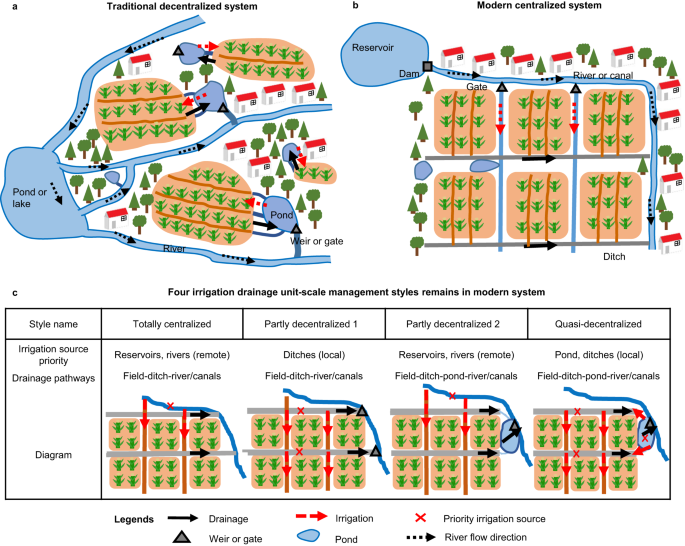


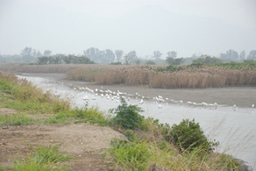
Please sign in or register for FREE
If you are a registered user on Research Communities by Springer Nature, please sign in